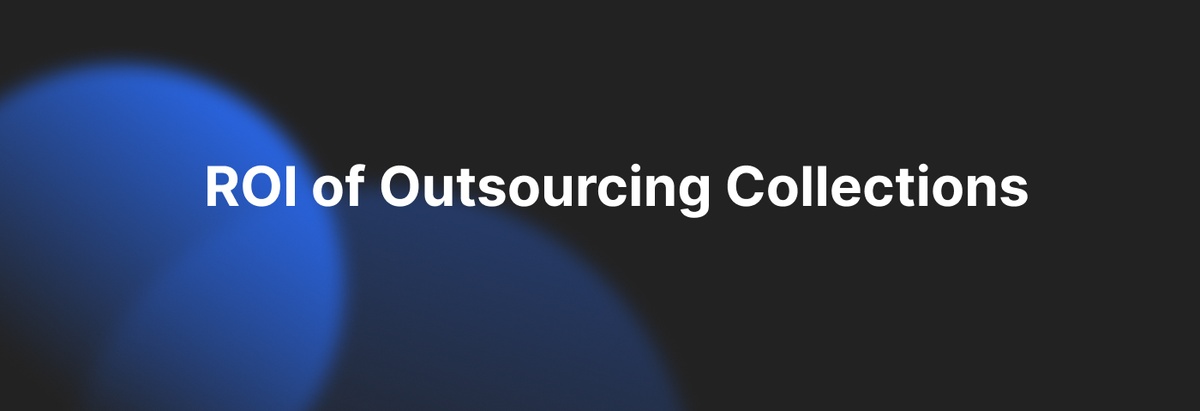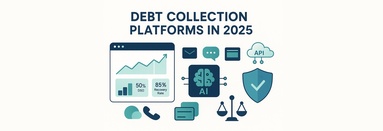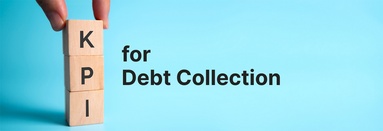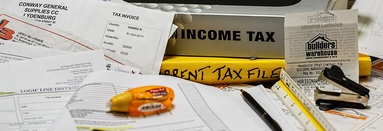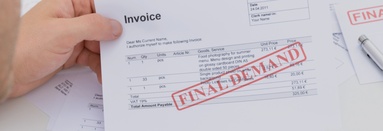Late payments may seem like a small nuisance at first, but over time they quietly erode cash flow, strain operations, and distract teams from growth. Many business leaders recognize the frustration of chasing overdue invoices, yet few have a clear framework for measuring whether outsourcing collections truly improves financial performance.
ROI—Return on Investment—offers a simple but powerful way to answer one question: Is outsourcing collections financially worthwhile for my business?
For entrepreneurs, CFOs, and operations managers, understanding this number can turn collections from a frustrating expense into a predictable, performance-driven process.
The Real Cost of Collecting Debt Internally
At first glance, managing collections in-house seems cost-effective. You already have staff, tools, and processes—why pay an external agency?
But when you unpack the true costs, the picture shifts. Internal collections often involve:
- Labor expenses: Salaries, benefits, and training for staff chasing overdue invoices.
- Technology costs: CRM systems, accounting software, and communication tools.
- Time lost: Employees could focus on sales or operations instead of follow-up calls.
- Compliance risk: Laws around debt collection vary by state and industry—mistakes are costly.
When these hidden costs add up, outsourcing can often deliver higher recoveries at a lower total cost.
How to Calculate the ROI of Outsourcing Collections
ROI shows how much profit or benefit your company earns from an investment relative to what you spend. In this case, it measures the financial return from using a professional collection partner.
Formula: ROI = (Recovered Amount – Total Cost of Collection) ÷ Total Cost of Collection × 100
Example. Your company turns over $200,000 in unpaid invoices to a third-party agency. The agency recovers $120,000. You pay $30,000 in fees and spend $5,000 internally managing the process.
Your ROI would be: (($120,000 – $35,000) ÷ $35,000) × 100 = 243%
That means for every dollar spent, you earned $2.43 back in recovered revenue.
Beyond the Numbers: What ROI Really Represents
ROI is more than a math exercise—it’s a reflection of your business efficiency.
When collections are outsourced effectively, your company gains:
- Improved cash flow – predictable income from recovered accounts.
- Reduced write-offs – fewer losses from uncollectible debts.
- More internal bandwidth – your team can focus on growth, not chasing payments.
- Better customer relationships – professional collectors handle communication with tact and compliance.
Viewed this way, outsourcing isn’t just an expense—it’s a way to unlock working capital and protect long-term revenue.
Common Mistakes When Measuring ROI
Even experienced finance teams can miscalculate ROI if they leave out key variables. Here are some pitfalls to avoid:
- Ignoring time value: A dollar recovered today is more valuable than one recovered months later.
- Overlooking internal effort: Even outsourced collections require coordination—factor that in.
- Not adjusting for debt age: Older accounts typically recover at lower rates.
- Using incomplete data: Track both recovered and unrecovered debts for a clear ROI picture.
Accurate ROI depends on accurate inputs—and that’s where transparency becomes critical.
Comparing ROI Across Collection Partners
Not every collection agency or attorney performs the same. Some deliver high recovery rates but charge more; others cost less but take longer or recover less.
To truly understand ROI, you need side-by-side visibility into partner performance.
That’s exactly what Retrievables provides.
How Retrievables Helps You Measure and Improve ROI
Retrievables was built to make commercial debt recovery more transparent, efficient, and data-driven. It connects businesses with experienced collection attorneys and agencies—and gives you the data to make informed choices.
1. Transparent Partner Comparison
Retrievables lets you compare multiple agencies or attorneys on metrics like:
- Recovery success rate
- Fee structure
- Average time to recover
- Industry specialization
That means you can select the partner that offers the best return for your unique debt portfolio, not just the lowest fee.
2. Real-Time Performance Tracking
The platform provides dashboards that show exactly how much was recovered, what it cost, and how long it took. You can easily see your ROI per partner and identify which agencies deliver the most value.
3. Focus on B2B (Commercial) Debt
Retrievables is specifically designed for business-to-business debt, which often involves larger balances and more complex contracts. Its network includes specialized collection attorneys and agencies that understand commercial law and corporate payment behavior.
4. Compliance and Professionalism
Retrievables ensures that all partners operate within legal and ethical boundaries, reducing your risk while maintaining professionalism with your clients.
By combining transparency with technology, Retrievables turns what used to be a guessing game into a data-driven decision process.
How to Use ROI Insights Strategically
Once you understand your collection ROI, you can use that data to make smarter business choices. For example:
- Segment your debt portfolio: Outsource only high-value or older debts where ROI is strongest.
- Negotiate smarter contracts: Use performance data to secure better rates with agencies.
- Forecast cash flow: With predictable recovery rates, you can plan investments more confidently.
ROI isn’t just a backward-looking metric—it’s a strategic tool for future financial planning.
Short-Term Results vs. Long-Term Gains
A strong ROI in the short term feels great, but the real value of outsourcing comes from consistent performance. Over time, businesses that partner with high-quality collection firms:
- Write off fewer accounts as bad debt.
- Improve DSO (Days Sales Outstanding) metrics.
- Strengthen relationships with repeat customers.
- Free up cash that fuels growth or investment.
Measured correctly, ROI shows not just what you recovered—but how your overall financial health improves.
A Practical ROI Example Using Transparent Partner Comparison
Here’s how comparing partners through Retrievables could look in real life:
| Agency/Attorney |
Recovery Rate |
Fee % |
Average Days to Recover |
Net ROI |
| Partner A |
60% |
25% |
45 |
180% |
| Partner B |
50% |
20% |
30 |
200% |
| Partner C |
65% |
35% |
60 |
150% |
This kind of side-by-side data makes it simple to choose which partner best aligns with your cash flow goals—whether that’s maximizing recovery, minimizing fees, or recovering faster.
Why Transparency Is the Future of Collections
In traditional debt collection, information gaps make ROI calculations murky. Fees vary, performance reports are inconsistent, and benchmarks are unclear.
Retrievables removes that opacity by giving businesses objective performance data before they commit. That transparency drives better decision-making, better partnerships, and ultimately—better returns.
FAQs
How do I know if outsourcing collections is worth it?
If your recovery rate improves by more than your outsourcing cost, your ROI is positive. Tools like Retrievables make this easy to measure.
How quickly can I expect results?
Most businesses start seeing recovery—and thus ROI—within the first 60 to 90 days of outsourcing.
Will outsourcing hurt client relationships?
Reputable agencies, like those vetted by Retrievables, use professional and compliant communication that preserves business relationships.
Can I track ROI over time?
Yes. Retrievables’ performance dashboard helps you monitor ongoing recovery metrics and identify long-term trends.
Does Retrievables handle consumer debt too?
No. Retrievables focuses exclusively on commercial (B2B) debt, ensuring partners are experts in business recovery.
Is Retrievables suitable for large enterprises?
Absolutely. It’s designed to support enterprises managing multiple accounts or significant receivables across industries.
Conclusion: Turning Data into Debt Recovery Power
Calculating the ROI of outsourcing collections gives businesses a clear picture of how effectively their recovery investments pay off. By combining financial data with performance transparency, you can identify the right partners, minimize costs, and accelerate cash flow.
Retrievables takes that a step further—connecting you with vetted commercial debt professionals and showing you exactly how each partner performs. It turns the uncertainty of debt recovery into a measurable, strategic advantage.
In an era where every dollar of working capital matters, understanding and optimizing your collection ROI could be one of the smartest financial moves your business makes this year.
